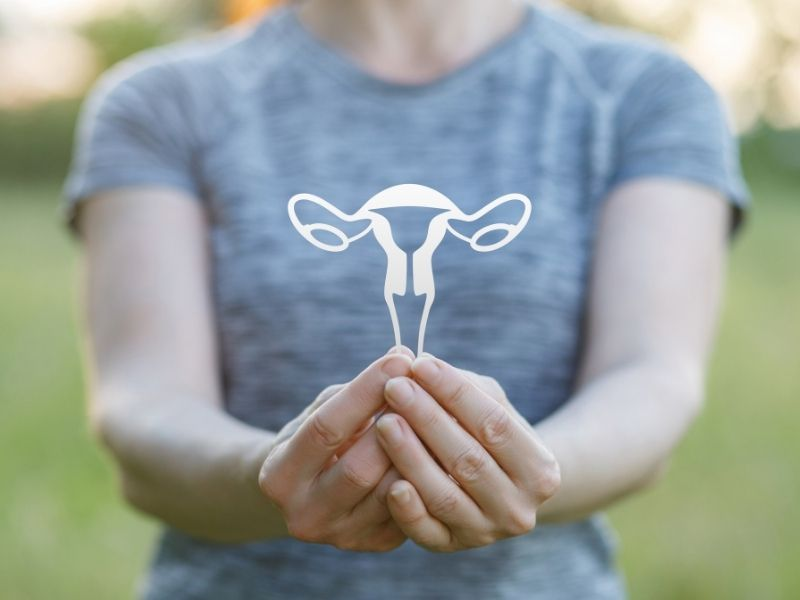Uterine prolapse is defined as the condition in which the uterus, one of the pelvic organs of women, is not where it should be and sags downwards. This condition can generally be triggered by factors such as aging, the number of births the woman has had, and the weakening of the pelvic floor muscles.
Symptoms of uterine prolapse include pain in the pelvic area, urinary incontinence, discomfort during sexual intercourse, and a feeling of vaginal pressure. Treatment methods include exercise, pelvic floor physiotherapy and uterine prolapse surgery. Early diagnosis and treatment is important to reduce or eliminate the symptoms of uterine prolapse.
Uterine Prolapse Treatment
Treatment for uterine prolapse may vary depending on the severity of the symptoms experienced, the patient's age, general health condition and the level of uterine prolapse. Mild uterine prolapse can often be treated with lifestyle changes, pelvic floor exercises or physiotherapy. For moderate sagging, a device called pessar can be used. However, in severe uterine prolapse, surgical intervention may be required.
It is recommended in cases where uterine prolapse requires treatment, such as the presence of severe symptoms, negative impact on quality of life, recurrent urinary tract infections or pain during sexual intercourse. Treatment options are determined according to the physician's evaluation and the patient's individual condition.
How is Uterine Prolapse Surgery Performed?
Uterine prolapse surgery can be performed by different methods depending on the patient's general health condition, the severity of the symptoms experienced and the necessity of surgical intervention. However, the methods generally used in uterine prolapse surgeries are:
Hysteropexy (Fixing the Uterus in Place): In this method, the uterus is placed where it should be and fixed to the pelvic floor muscles or connective tissues. In this way, the uterus returns to its normal position and prolapse is corrected.
Hysterectomy (Uterine Removal): In cases of severe uterine prolapse, it may be necessary to remove the uterus. With this surgery, the uterus is completely removed. This hysterectomy surgery permanently eliminates the discomfort caused by uterine prolapse.
Laparoscopic Surgery: Uterine prolapse surgeries are now performed with minimally invasive techniques. Laparoscopic surgery allows the uterus to be fixed or removed using small incisions and special surgical instruments. Thanks to this method, the patient feels less pain and experiences a faster recovery process, and the hospital stay is shortened.
Vaginal Approach: In some patients, a vaginal approach may be preferred to correct uterine prolapse. In this case, the uterus is corrected and supported by reaching it through the vagina.


Preparation Process Before Uterine Prolapse Surgery
First, a detailed examination is performed by the physician and the diagnosis of uterine prolapse is confirmed. Then, the patient's medical history is examined and it is evaluated whether the current health condition is suitable for surgery. The risks and benefits of the surgery are explained to the patient. Surgery options are presented and which method is preferred is explained. The anesthesiologist evaluates whether the patient is suitable for anesthesia.
Medication use is regulated before surgery and temporarily discontinued if necessary. A fasting or thirst process may be initiated before the surgery. It is recommended to stop smoking and alcohol consumption habits. A postoperative care plan is created. Finally, if the patient has any questions or concerns about the surgery, these issues are shared with the doctor. This preparation process is of great importance for the successful completion of the surgery and reducing the risk of complications.
Stages of Uterine Prolapse Surgery
Uterine prolapse surgery is a surgical procedure performed to correct situations in which the uterus, one of the pelvic organs of women, prolapses from its normal position or when the uterus needs to be removed. This surgery has certain stages and each of them is important. The stages of uterine prolapse surgery can be explained as follows: First, a suitable type of anesthesia is applied to the patient at the beginning of the surgery, generally general anesthesia or epidural anesthesia is preferred. This ensures that the patient does not feel pain during the surgery. The surgeon then makes appropriate incisions to correct uterine prolapse or remove the uterus. These incisions can be made with minimally invasive methods or traditional open surgery.
Depending on the treatment for uterine prolapse, the uterus is repositioned and appropriately secured to support the pelvic floor, or the uterus is completely removed in a procedure known as hysterectomy. The surgeon makes the necessary adjustments to strengthen the support structures of the pelvic floor, and then the incisions are closed and stitches are applied. In the postoperative period, the patient is closely monitored and pain control, wound care and infection risk reduction measures are implemented. The patient's recovery is monitored with regular check-ups.
Care and Recovery Process After Uterine Prolapse Surgery
It is important for the patient to experience careful care and recovery after uterine prolapse surgery. In this process, pain control is of great importance; Doctors prescribe appropriate painkillers or medications to reduce the patient's pain. While regular care and dressing of surgical incisions are carried out, care should be taken for wound hygiene in order to minimize the risk of infection. The recovery process of the patients is closely monitored by the doctors, regular check-ups are performed and it is monitored whether the uterine prolapse recurs or complications develop.
While physical activities should be gradually increased in the postoperative period, heavy lifting and intense exercises should be avoided. Particular attention should be paid to urinary and bowel functions. Sensitivity towards sexual functions is shown, and patients are offered suggestions on sexual health and comfort. For special cases such as hysterectomy, special care methods and hormone treatments may be applied when necessary. Psychological support and counseling is provided if deemed necessary in the postoperative period, and assistance is provided in coping with emotional difficulties after surgery. The healing process of patients varies depending on individual factors, but can usually take a few weeks to a few months. The full recovery process varies depending on the patient's health condition, the type of surgery and the presence of complications.


Risks of Uterine Prolapse Surgery
Uterine prolapse surgery has risks, like all surgeries. The risks of uterine prolapse surgery include the following.
There is a risk of infection after surgery.
Bleeding may occur during or after surgery.
Reactions to the anesthesia used may occur.
Other pelvic organs or vessels may be damaged during the surgical procedure.
Urinary incontinence problems may occur after surgery.
Sexual dysfunction may occur due to surgery.
The incidence of these risks varies depending on the patient's specific health condition, surgical techniques and methods used.
Uterine Prolapse Surgery Prices
Uterine prolapse surgery prices are determined by various factors and may vary. These factors include the type of surgery, the experience of the hospital and the surgeon, the patient's health insurance status, the surgeon's experience and expertise, possible complications and additional procedures, the patient's health status and personal preferences. Prices may vary depending on the type of surgery to be performed; Minimally invasive methods are generally more costly. Unexpected complications or the need for additional procedures during surgery may increase costs. Patients' general health status may affect the difficulty and risks of surgery. Additionally, patients' personal preferences, such as their rooms and care options, may also affect prices.











METE İTİL
Appointment and Contact Form
You can ask us your questions or contact us to make an appointment.